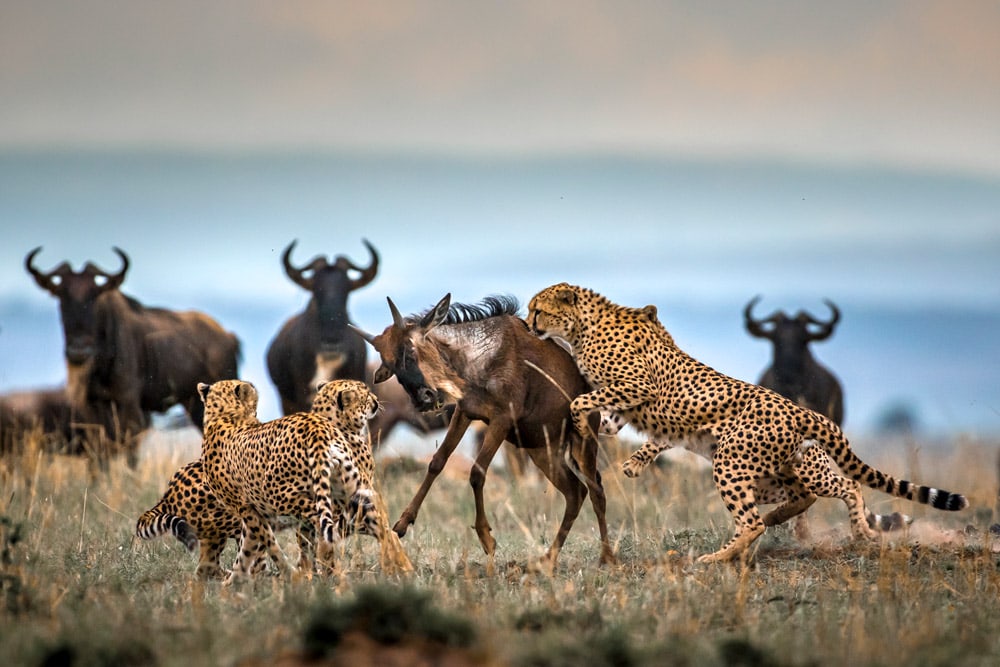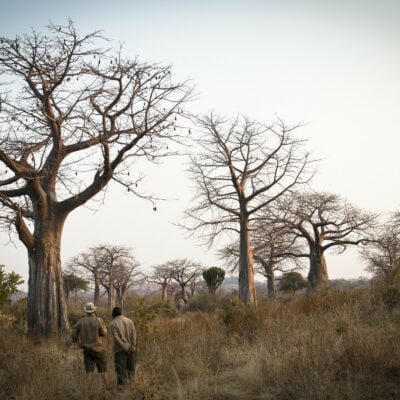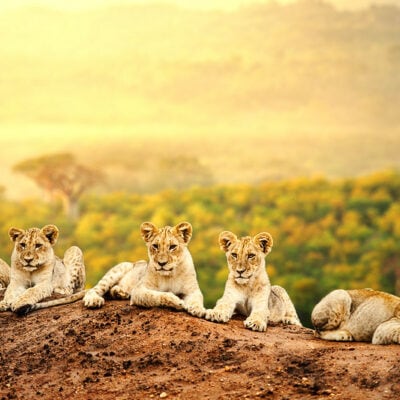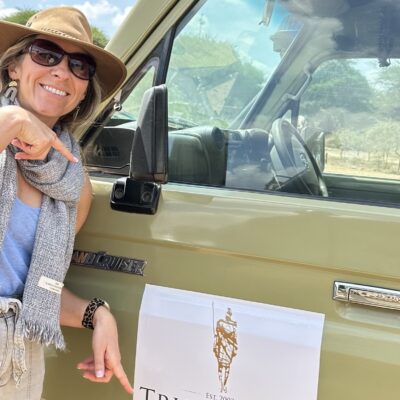Witness a truly spectacular event in the wild: The Great Migration – following millions of wildebeest as they crossing the plains of Serengeti in Tanzania and renowned Masai Mara in Kenya. The migration sees over 1.5 million wildebeest, 400,000 zebra, 300,000 Grant’s and Thomson’s gazelle and 12,000 eland traverse the terrain in search of fresh pastures.
If you’re looking for expert planning advice on experiencing this bucket-list sighting, look no further: explore our guide to a Great Migration safari below:
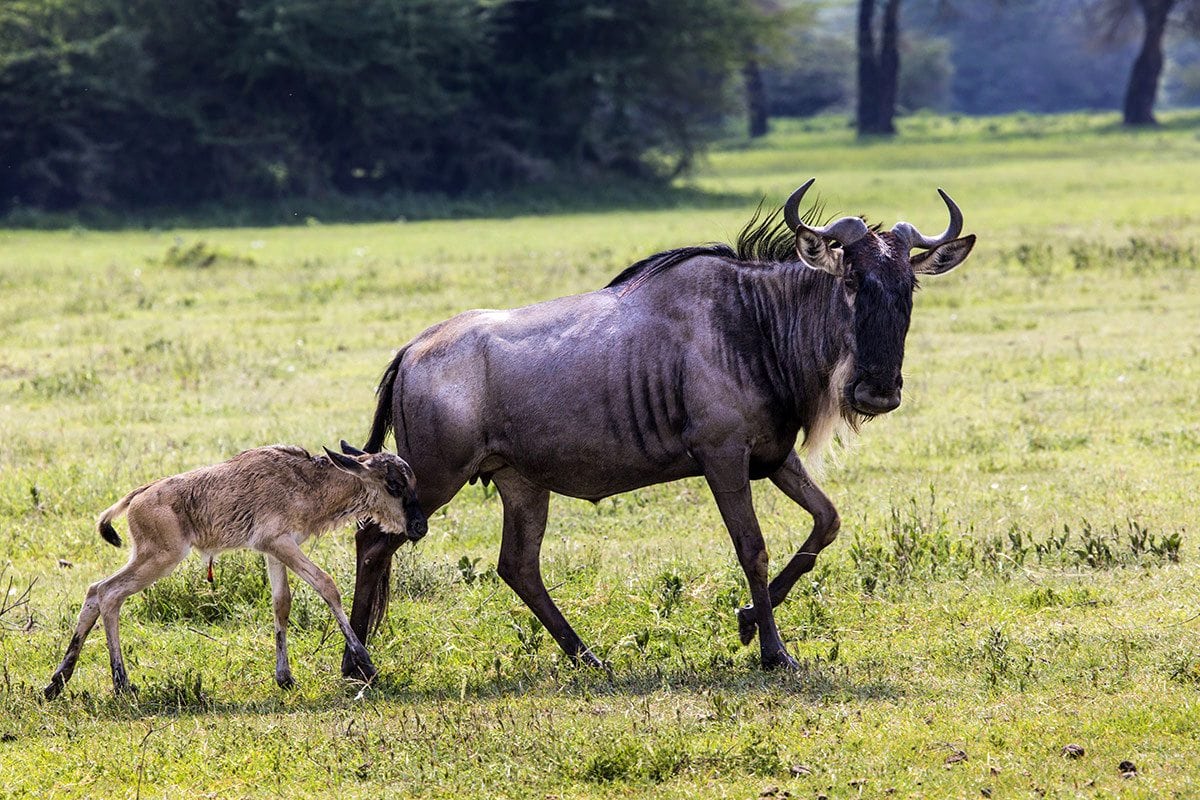
JANUARY – MARCH
Head for the Southern Serengeti and the vast, open Ndutu plains just in time for calving season. Approximately 8,000 wildebeest are born every day during peak calving in February. This month also draws an astonishing number of predators eager to pray on the vulnerable young making for some jaw dropping action.
APRIL
The trek north: Herds move slowly northwards to fresh grazing as the action-packed rutting (breeding) season draws near.
MAY – JUNE
With mating season in full swing, the journey continues. Some herds will traverse into the Western Corridor and some may even cross the Grumeti River; whereas others will make their way through the Central Serengeti and onto the Northern Serengeti.
Generally speaking, if you’re looking to travel in May through to mid-June, we’d suggest “hedging your bets” and including two different areas in the Serengeti to virtually guarantee catching the herds.
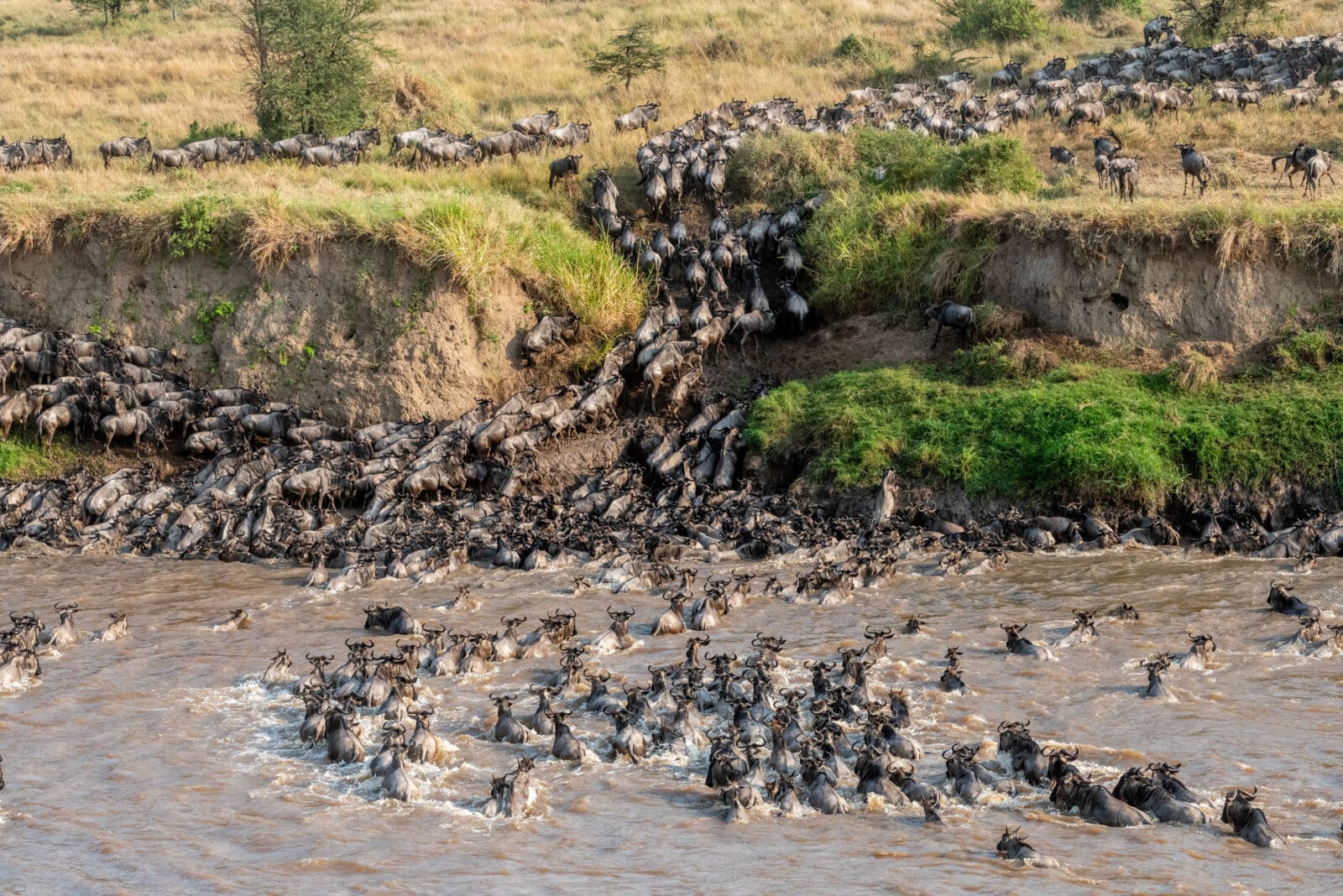
JULY – OCTOBER
It’s during these months that safari-goers have the best chances of seeing one of the famed River Crossings! The crossings usually start around July, keeping in mind that this is dependent on the rains. The herds will be spread throughout the Northern Serengeti and Maasai Mara from July to mid-October, and while river crossings can never be guaranteed, it’s during these months that travellers will have the best chances possible.
LATE OCTOBER – DECEMBER
With the “short-rains” starting in November the herds usually cross back to the Serengeti from the Masai Mara and start to make their way to the Central and Eastern Serengeti regions. By the beginning of December, the herds start coming together in Ndutu as the calving season approaches and the migration cycle continues once again.
Contact us to discuss your once in a lifetime Great Migration Safari.
